Hadzabe and Datoga Art Exhibition & Project | Tanzania, Africa
Emergent Art Space is honored to present the Hadzabe and Datoga art exhibition conceptualized and curated by Bonita Ngonyani and Elizabeth Mwambulukutu. The project curators from Tanzania discuss this online exhibition, its context, and development process as within the 'Documenting the Undocumented' series that promotes and records Tanzanian culture while supporting artists to take part in international collaborations.
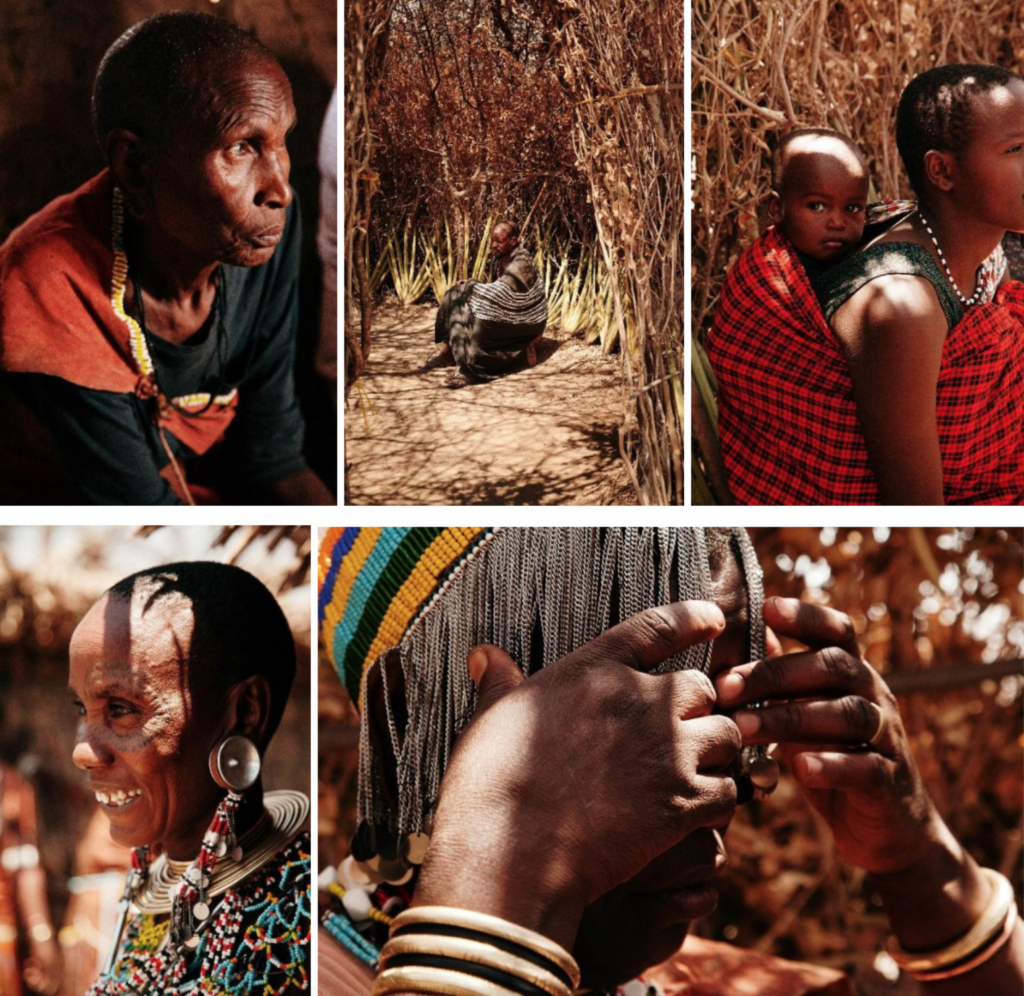
Our Project
Documenting the Undocumented is a project aimed at showcasing the indigenous tribes of Tanzania and promoting their longevity in the modern era. In this exhibition, Ammal, Beatrice, Jennifer, and Shija are four emerging creatives who traveled to Qangded village, the Hadzabe, and Datoga communities to engage and learn from them. This journey transformed their narratives into a creative medium. Their stories are exhibited here through our partnership with Emergent Art Space, supporting our mutual goals of promoting young international artists and cultural exchange.
Who are the Hadzabe and Datogas?
The area surrounding Lake Eyasi, located in Northern Tanzania is home to indigenous ethnic tribes known as the Hadzabe and Datoga. There are, as of 2015, between 1,200 and 1,300 Hadza people living in Tanzania, however only around 400 Hadza still survive exclusively based on the traditional means of foraging.
While there are some documentaries that have spotlighted these indigenous tribes (i.e. 2015 National Geographic video) and turned them into untouched jewels in Tanzania's tourist attraction. We felt that more stories were yet to be told, particularly those created by Tanzanians.
Meet Our Creatives and their Artworks
Ammal Aboud | Photographer
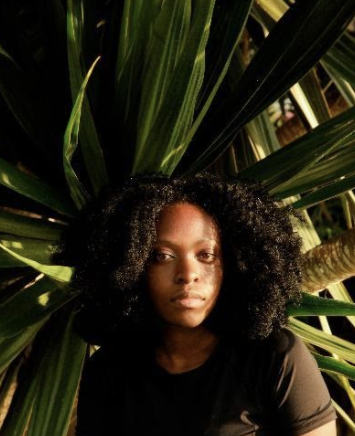
Ammal Aboud is a photographer born and raised in Dar es Salaam, Tanzania. Ammal uses candid imagery and portraiture to tell the stories unique to the groups and individuals that feature in her images.
From an early age, Ammal was always encouraged to paint and draw. Eventually, she discovered that photography was her preferred craft because it provided an instant and immersive self-expression tool.
As a result, Ammal is inspired to document life in objective and authentic representations of those featured in her images, as more than nameless objects to be observed from afar, but rather as sentient individuals and groups who are indeed unique and as equally complex as the viewer and worth a closer look.
Like many young individuals just getting their bearings in the world, Ammal has many aspirations. In brief, she aspires to hone and expand her skillset and build a larger body of work that will benefit this generation and the next.
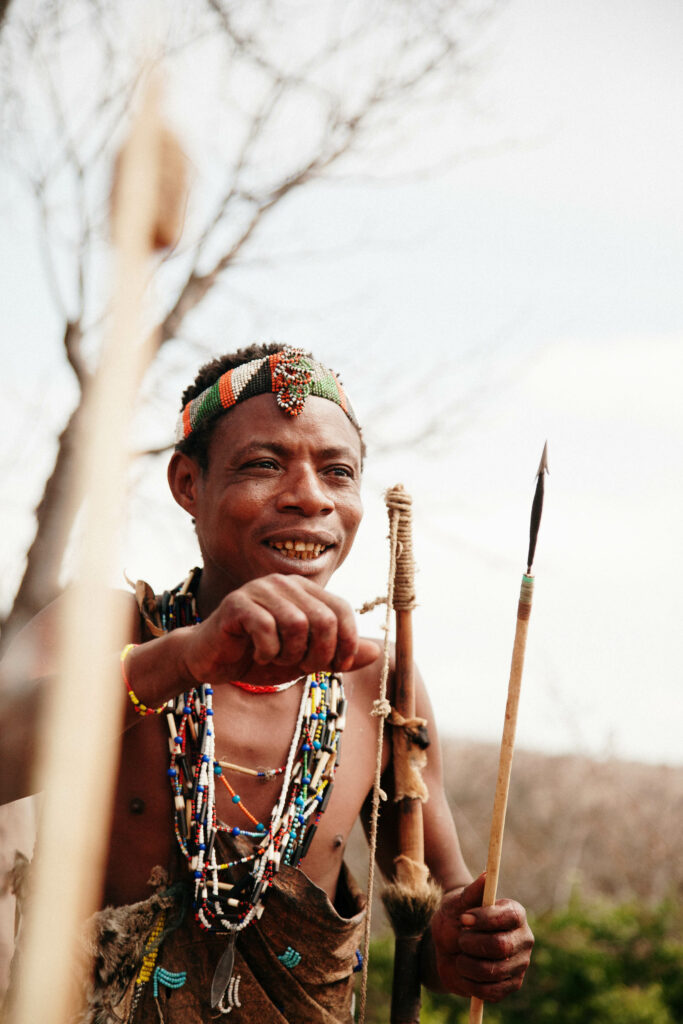
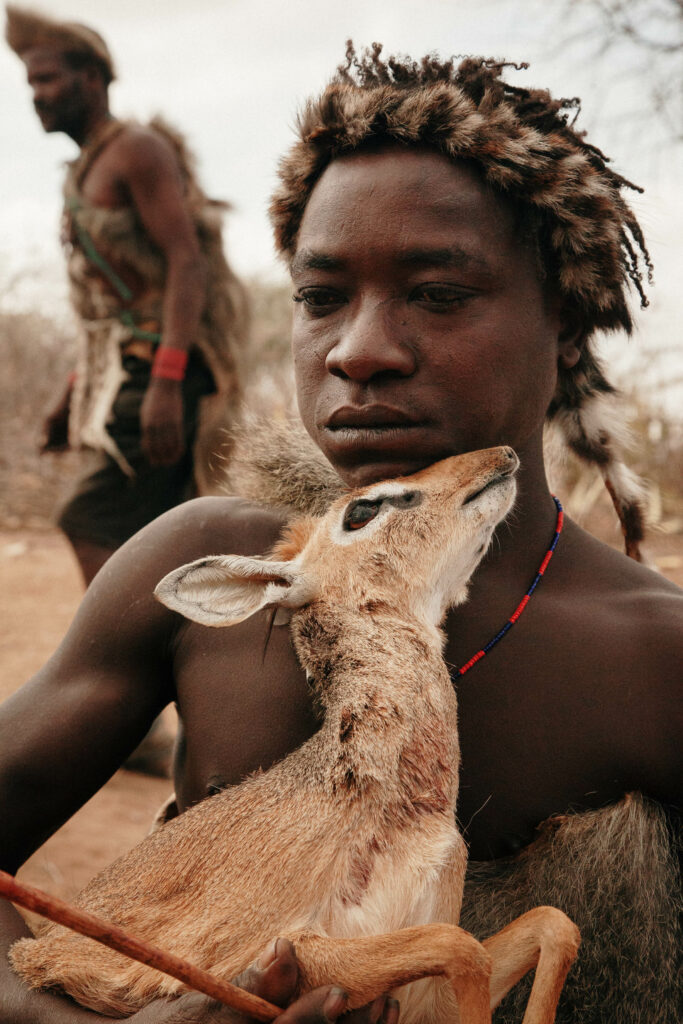
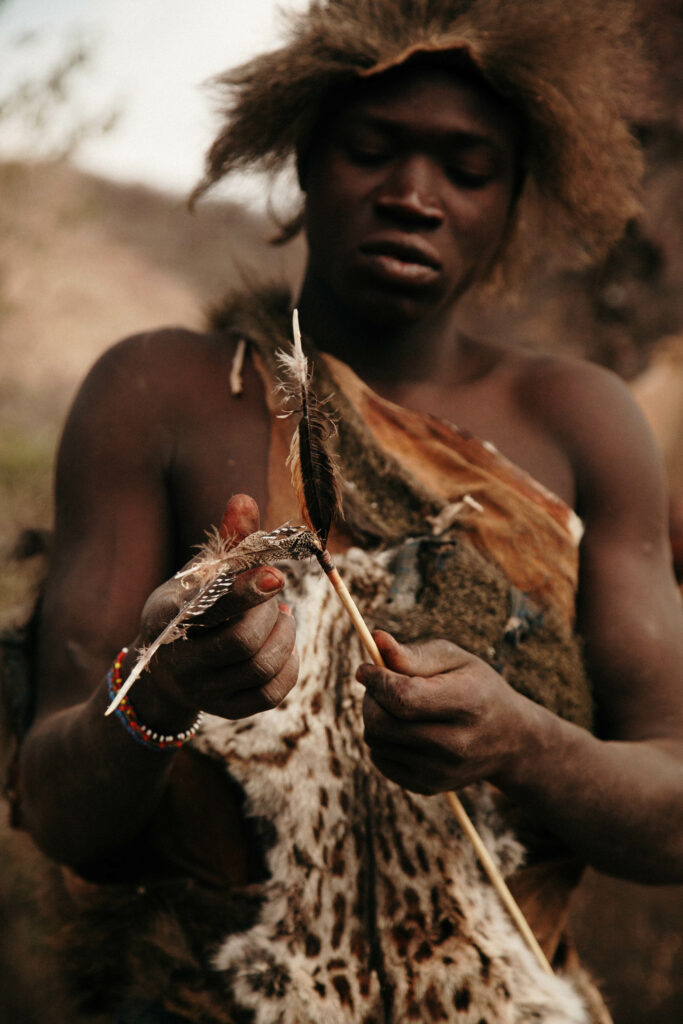
All photograph dimension: 39.62 x 59.44 cm
"I went into the project expecting to be inspired by the people themselves and their relationship with their environment; I was not disappointed. As soon as we set our sights on the group of Hadzabe men and their hunting dogs under the baobab tree home they made and the huts and beaded adornments of the Datoga tribe, I was inspired by the harmonious way in which the Hadza tribe lived with the sprawling bushlands bordering lake Eyasi and the resourceful talents the Datoga employed to recycle scrap metal to create their adornments and tradable metalworks. I took time to frame images that featured the people and the practices that are uniquely Hadza and Datoga, having been honed over 5000 years to have a feather-light impact on the environment and in turn enabling them to persist in this challenging environment.
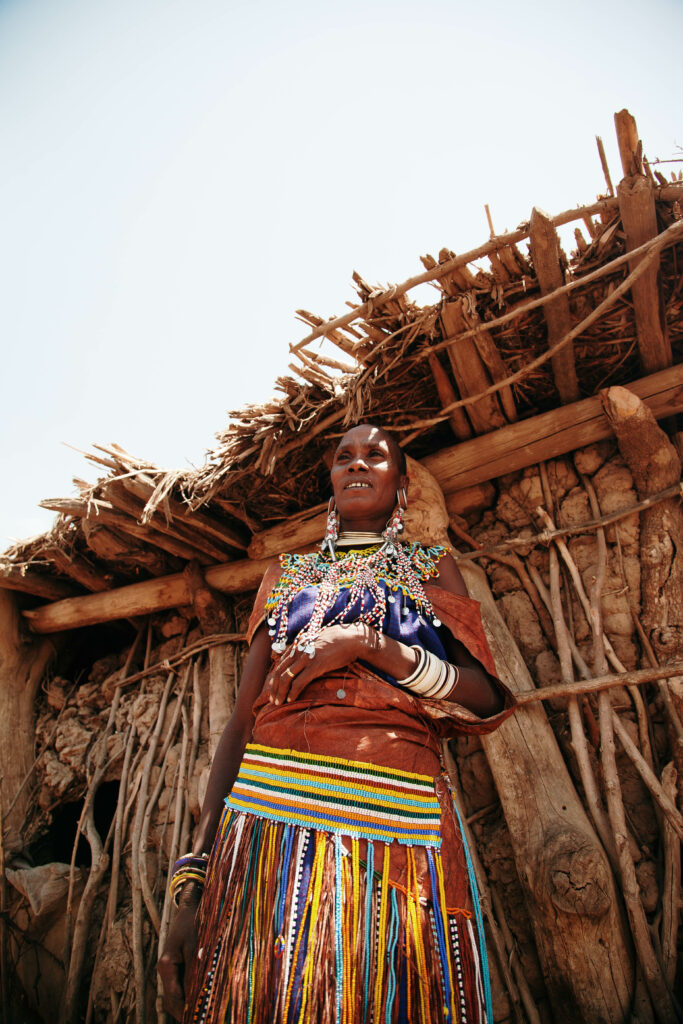
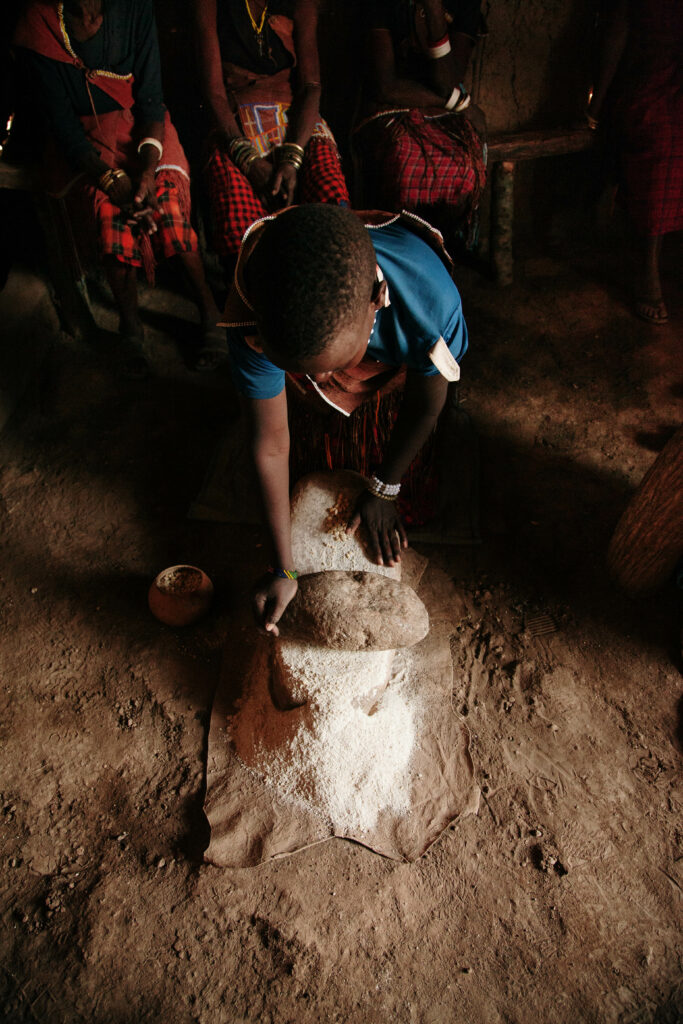
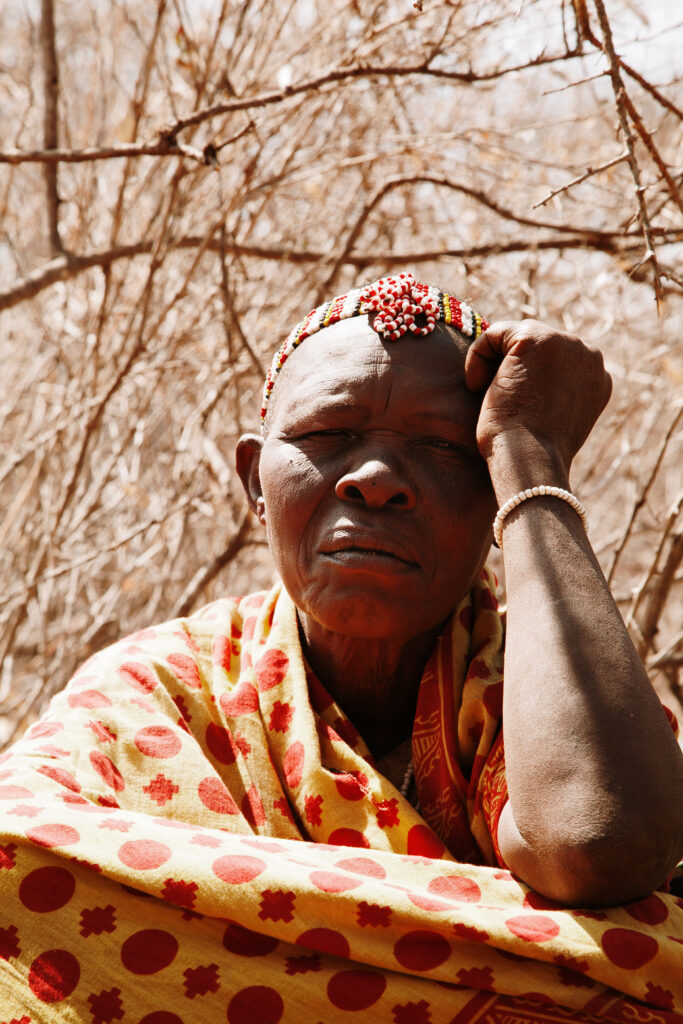
At the beginning of the team’s expedition into the villages, I found myself taking photos of things I found new and foreign to my modern lifestyle. Quickly after settling into the trip and interacting with the tribesmen and women, I began capturing images of items and interactions that the community members wanted to be documented as per their showing interest in showcasing certain tools and living quarters, hunting techniques, crafts and adornment, as well as lighthearted domestic life such as music and dance.
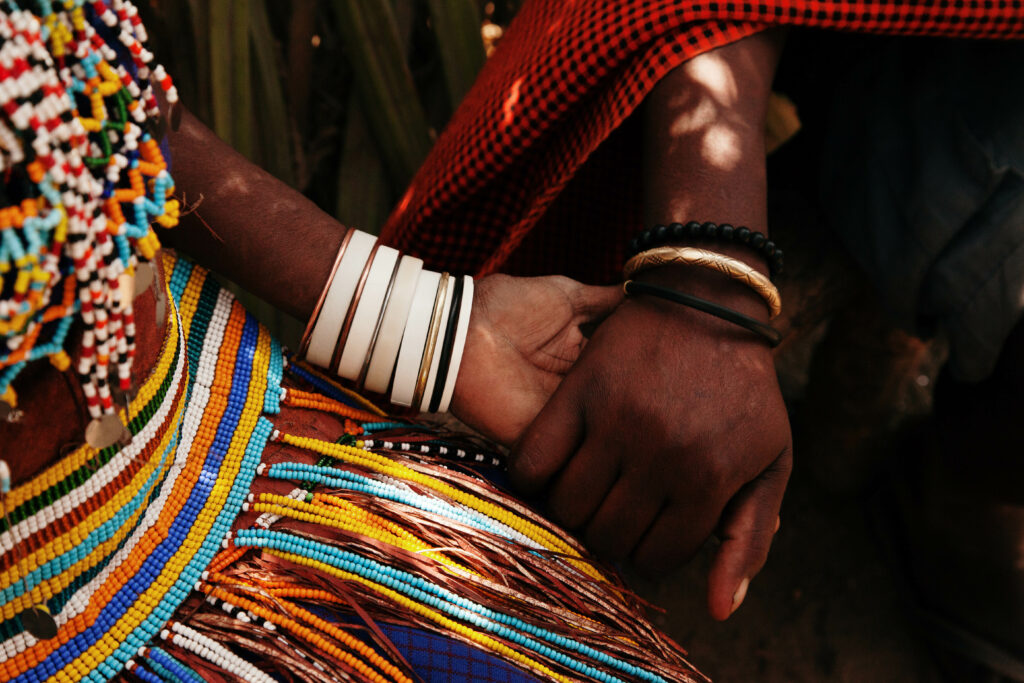
I believe that it is those types of images combined with a simple fly-on-the-wall approach that satisfied my need to represent the Hadza tribe in a way that was authentic and true to who they believe themselves to be."
Click the right arrow on the image below to see the entire gallery
Shija Masele | Visual artist
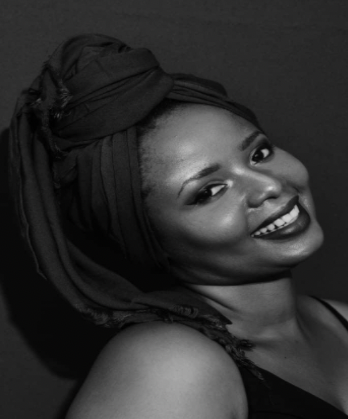
Shiija B. Masele is a painter and a makeup artist based in Dar Es Salaam, Tanzania. She has a bachelor’s degree in Political Science and Public Administration from the University of Dar Es Salaam.
She began creating artworks at a young age, having been inspired by her father and in 2020 she was part of the first-ever Nafasi Academy – a series of artistic workshops hosted by Nafasi Art Space in Tanzania.
Her artwork is informed partly by her educational background in politics and what happens in her country's political arena. She explores the political environment and the notion of power in different contexts.
She is also inspired by daily life experiences and uses art not only to express her feelings and emotions but also as a space where she can be herself, release all the tensions and relax. To her, colours speak more than words can explain.
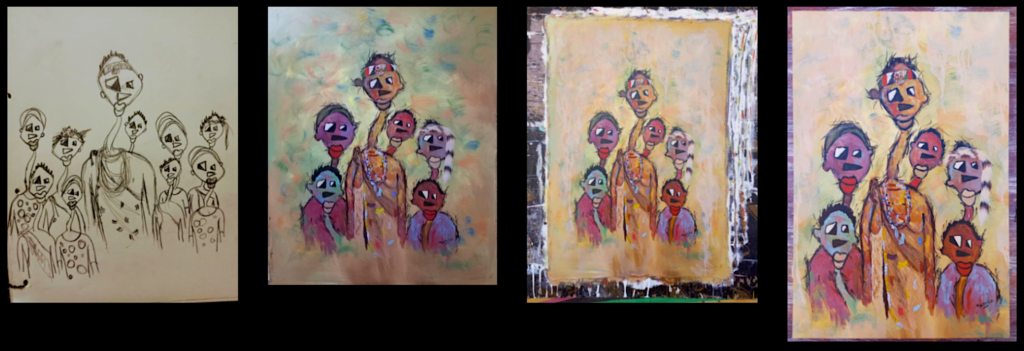
Paanakwebee is a name given to a group leader (a young man), leading 30-40 people who are closely related. The leader makes his own headpiece made of animal skin and beads which identifies him as a group leader. Other men in the group can wear a headpiece from animal skin and fur only as a trophy/token from their successful hunt. The Paanakwebee role is given to a young man because the hunting process requires a person to be in good shape. He has to be a very skillful hunter, excellent with bows and arrows, and also has to be well experienced with traditional medicine to heal others in the community. The leader is always around his people, be it in the hunting game or with the group resting.

Salameda is a C-shaped tattoo around the eyes done to girls from 13 years of age. It symbolizes beauty and was an important identifier for a woman to get a husband. Salameda is done with a hook-like needle and a razor blade from smoke on the roof generated when cooking. Some who could not finish the design because of the pain were laughed at and had less chance of getting a husband. Currently, tattoos are only seen on older women, the culture is disappearing as days go on because of mingling with outsiders, and it is seen as old-fashioned.
Shija's Reflections
Being born and raised in Dar es Salaam, I used to hear stories about the Hadzabe and Datoga communities and some seemed so out of touch with my reality to even imagine how it will be like to actually be there physically. Initially, I didn't know what to expect from the visit.
Seeing and experiencing a glimpse of their ways of life was a fascinating feeling for me, as I am comfortable with urban living.
For instance Hadzabe system of marriage i.e. only marrying inside their tribe to keep their culture intact or their art of bead making which are mostly worn by men. I also observed their way of rulling, where the leader is not a boss and is ALWAYS with his people leading by example, eating natural food (eating anything that is moving and studying what is safe for them by watching what birds eat). Their hunting process... let's just say that if you are not fit, you may struggle to keep up.
They had to stop and wait for us several times because they sensed they were walking too fast for us to keep up with them.
For the Datoga, their skills as blacksmiths where they create jewellery by recycling metal objects such as nails, their designing skills where they handmake clothes from animal skin and their way of tattooing which left me wondering just how women managed to finish the design with such amount pain.
These are just a few examples, I hope through my art work, you will get to experience a part of my encounter with the Hadzabe and Datoga indigenous people.
Beatrice Mashala | Visual Artist
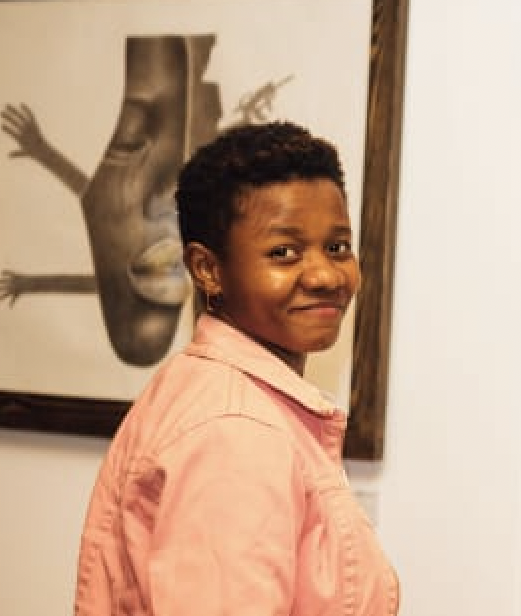
Beatrice Mashala is a full-time visual artist born in
Dar Es Salaam, Tanzania. She graduated from Makumira University with a Bachelor’s Degree in Law.
Her interest in art began in 2018 after finishing law school; she wanted to be able to add value to her community and the world through her creations. Her inspiration stems from life experiences, surroundings, and the ever-changing issues in the contemporary world.
Her ultimate mission is to make great art that becomes a bridge that revives lives and uplifts souls.
“My work examines, scrutinizes, and interrogates fundamental personal, social, cultural, and political issues with the intention to shape society.
I am very interested in engaging my viewers in deep conversations, because that’s what art is all about, to get someone to stop for a really long time.
My work depicts my own life experiences, those of my family and community in a subtle way. Art is my therapy, it's the only way I can genuinely express myself, for me the essence of life is found in my artistry.
When a concept comes into my mind I would write it down and create an imaginative painting in my mind, let it marinate for some time, when it is fully formed I start painting. My paintings take time to finish.”
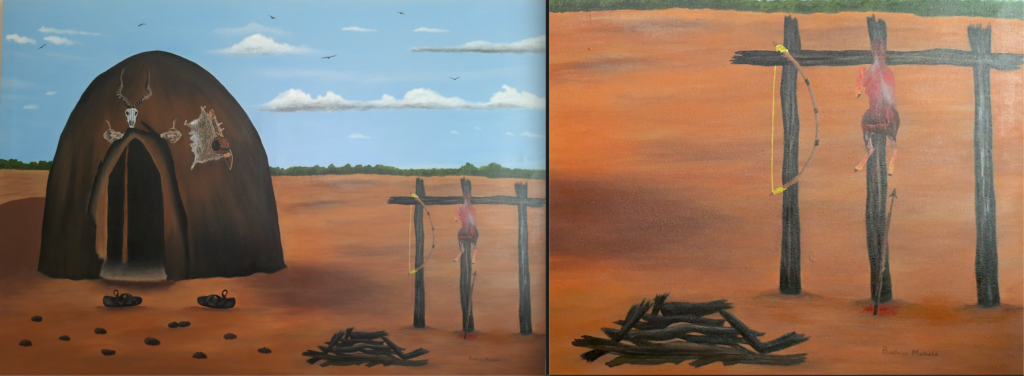
This body of work intends to shed light on the lives of the Hadzabe. This is their culture, their style. They gather and hunt as their daily routine. This is how they chose to live their lives. They are here, they exist, they are human beings, and this is their home.
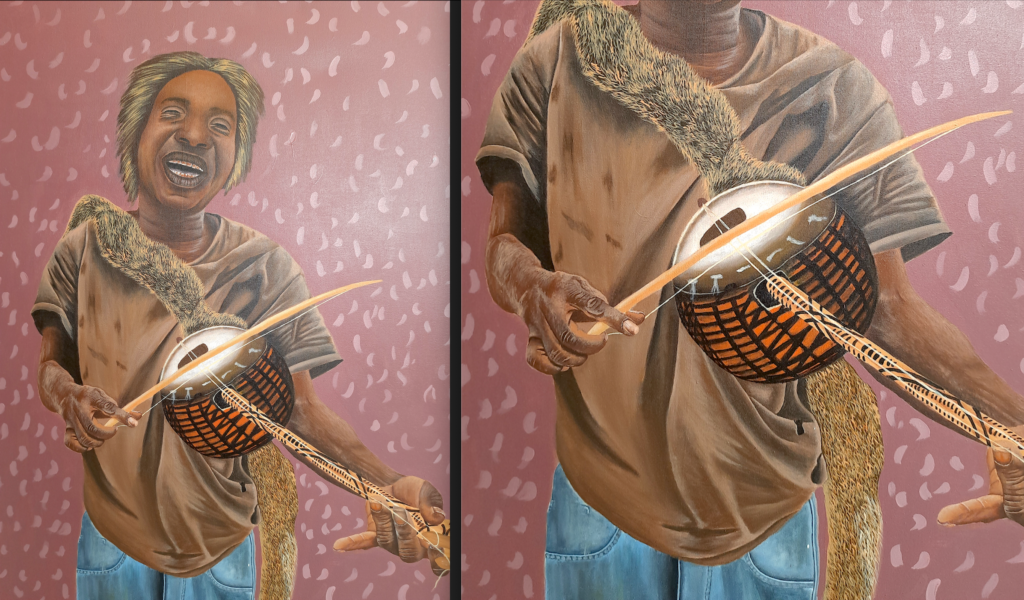
This body of work is about finding true joy. Happiness is not really a thing to be found, but more something to be unveiled within ourselves. Happiness is independent of wealth, success, or any other material things we believe will eventually make us happy.
Look at this Hadza man in the painting; he has dust all over his body; he doesn’t have much that we may perceive as substance, but he is grateful and overjoyed with the little he has.
Happiness is internal and not external because if we dwell on our external ever-changing circumstances, we will be waiting forever for true joy.
Beatrice’s reflections
I enjoyed being a part of Documenting the Undocumented project because it was an opportunity that enlightened the lives of other people who are often forgotten in modern society. To be given the opportunity to speak their truth through my art, to talk about their daily lives, their ups and downs, triumphs and trials, talents, customs, lifestyles, and achievements has been transformational. l want to use my art as a voice for these amazing tribes.
Jennifer Msekwa | Visual Artist
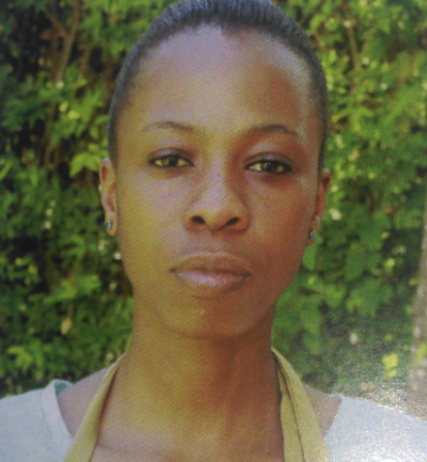
Jennifer is a visual artist based in Arusha and Dar es Salaam. She has loved art from an early age. Images fascinated her to the point where she decided to practice drawing them, referencing the drawings she got from books found at home. Drawing became her hobby for many years and she was later inspired to be a visual artist.
Jennifer enjoys creating collages done only with natural materials. This style is derived from her childhood; growing up in a home where people loved and cared
for nature and the environment, which changed her perspective and appreciation for plants, living things,
and the environment in general.
Her love and attention towards nature and the environment grew and she decided to be an environmental activist through her art. Just as the environment enables humans to survive/live while engaging in various social activities, so her work addresses various social issues while emphasizing environmental stewardship and preservation at the same time.
Jennifer considers art as an important means of learning, changing negative attitudes into positive, motivating, informing, criticizing, and even a way of performing revolutions without verbal communication or physical resistance.
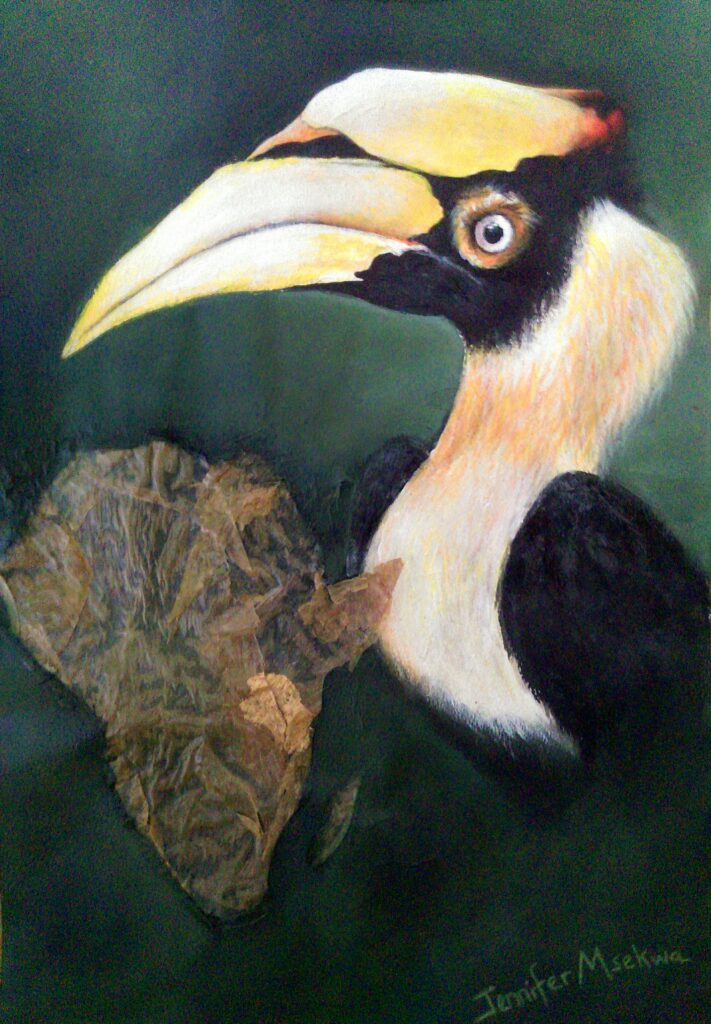
My artwork aims to show how natural resources available in the Hadzabe community enable them in their daily social activities. It helps to dispel negative perceptions of the African continent that seem not to have enough resources to facilitate daily life needs, especially the basic ones.
The Hadzabe community is a good example that shows how natural resources can sustain human life since the tribe depends on nature for almost 100%. In my research, I found out that the Hadzabe are self-sufficient in the field of herbal medicines and use natural remedies found in their areas.
I have regarded the Commiphora Africana plant as one of the most important herbs used by the Hadzabe in various ways, such as medicine, skincare (natural sunscreen), and many other uses. This plant in Hadzabe's native language is called "Sisiedako ".
The hornbill bird is one of the important birds in the Hadzabe community; after hunting the bird for food, they preserve the mouth and quills. The mouth is used as the tool used for crafting accessories, and they sell these accessories to visitors who come to their area, helping them to buy water from a remote area during the dry season. The Hadzabe use the quills for making arrows. I have attached materials from the Commiphora Africana plant I found in the Hadzabe land during the research tour to emphasize the concept.
The impala has a significant role in the Hadzabe and Datooga communities and it also helps the environment. Although a popular animal worldwide, the Hadzabe community’s view of the impala is more precious as it has a significant purpose that many are unaware of. I discovered, for example, that the Hadzabe women use the skin of the impala as sanitary pads during menstruation. They use the impala's skin because it is soft compared to skins from other animals. The dry season has water shortages, and so they also use the impala's skin to help them save water as the pads are not washed by water but exposed to the sun after use in order to dry them.
As a visual artist who is also an environmental activist, I made sure that my research was based on the natural resources available in the Hadzabe areas and to find out how nature and the environments, in general, enrich their lives in all aspects. I found this technique unique but also I realized that the use of this kind of pad does not harm the environment as much as the modern ones do since it is eco-friendly.
The impala is also one of the larger animals selected to be given as a dowry paid to women, as well as a good source of food in the tribe of Hadzabe. The impala also helps the Hadzabe to use the skin from the animal as a financial alternative of exchanging items with the Datooga tribe as barter trade.
The impala’s skin is one among various skins the Hadzabe use for doing barter trade with the Datooga tribe where the Datoogas use the skin to make clothes for women (only the women from the Datooga tribe wear these clothes). The toothbrush plant or scientifically "Salvadora Percica " is among the plants that the women collect berries from. This plant is highlighted among many other plants from the tribe because they don't eat its fruits until they get permission from the Chief.

Jennifer’s reflection
This project was a good opportunity to learn something new and, as an environmentalist, I was happy to learn of the eco-friendly alternatives they have. For instance, how the Hadza women use antelope skin as menstrual pads and the Datogas use calabash materials as household utensils; these were such creative alternatives instead of plastics.
I really loved the use of natural remedies and their environment-based lifestyle that make the indigenous communities very healthy. The experience helped me see how life was before the technological changes. It was a great opportunity to learn and add knowledge as an artist and environmentalist.
VIDEO DOCUMENTATION
Behind the scenes videos & photography by Take2Studios: Photography by Bill Marwa; Videography by Anna Kishimbo
ABOUT THE CURATORS
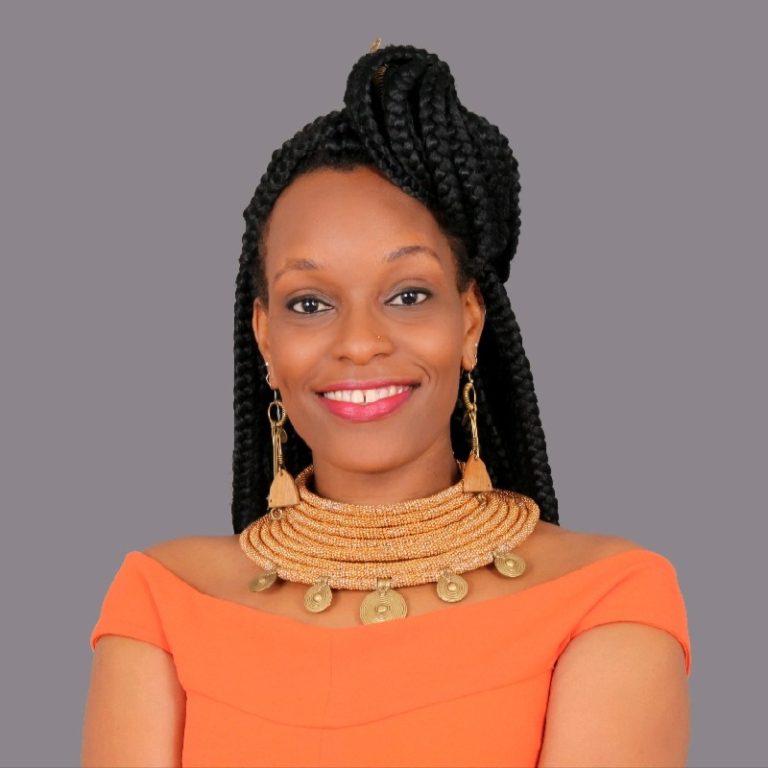
Elizabeth Mwambulukutu
Elizabeth Mwambulukutu is a communications practitioner and an award-winning visual artist. Elizabeth serves as the East Africa Regional Communications Manager at WaterAid that aims to accelerate and sustain access to clean water, sanitation, and hygiene. As a narrative activist, Elizabeth founded Elle Emmanuel (www.elle-emmanuel.com), a platform where she applies art as an instrument for shaping her community and breaking societal barriers. She also co-founded Hapo Zamani za Kale, aimed at cultural restoration, preservation, and promotion.
A fellow of the Young and Emerging Leaders Project (YELP) and a Mandela Washington Fellow, Elizabeth previously served as the vice curator for Global Shapers Arusha Hub, an initiative of the World Economic Forum. In 2016, Swahili Fashion Week recognized her as the first female recipient of the Photographer of the Year Award.
Bonita Ngonyani
Bonita Ngonyani is a Tanzanian, UK-based entrepreneur and owner of Rebel Roots (African hair and beauty products) and HerCBD (women’s health and well-being).
An experienced Digital Marketing Consultant with a demonstrated history of working in the non-profit organization industry.
Strong marketing professional with a master’s degree focused in International Finance and Economic Development from Heriot-Watt University and Awarded the departmental prize for International Finance and Economic Development.
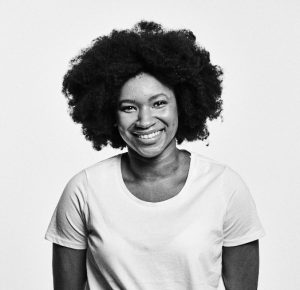
Arts and Culture for Development (AC4D)
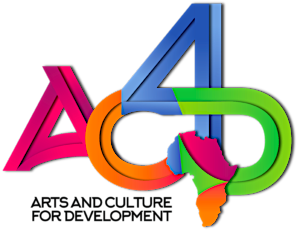
Arts and Culture for Development is a Tanzania initiative committed to making a contribution towards repositioning the role of arts and culture in the East African region through artist development, cultural research, and creative collaboration.
Our aim is to disseminate, exchange knowledge and contribute towards transforming the creative economy in Tanzania and Africa at large. We lead in articulating the life-changing impact of communities across East Africa, through storytelling, arts, and culture.
The Documenting the Undocumented creative art exhibition project has been conceptualised and curated by Bonita Ngonyani and Elizabeth Mwambulukutu. Our vision is to explore under-represented indigenous communities in Tanzania and use art as a medium to spark dialogue, facilitate cultural exchange and educate one another. This also serves as an opportunity to challenge Tanzanian creatives to create new narratives and provide an opportunity to showcase their explorations.
We felt that it was important for the creatives to travel to the community, so they could interact with indigenous communities, gain an appreciation and understanding of their way of life, and find inspiration for their work.
Four talented creatives were selected through a call for artists, promoted across our network of artists and social media. Artists were competitively selected based on their portfolios, as well as completing essay questions.
It was a long journey from Dar es Salaam to Qangded, where the Hadzabe and Datoga community are located (8-hour bus ride), with an overnight stay in Karatu and then an early hour ride to the village. The creatives spent one day with the tribes, spoke with them, danced, and explored their village together. The creatives were given the freedom to design what they like, provided it represented the learnings from the Hadzabe and Datoga tribes. We had a videographer record this experience and document the process.